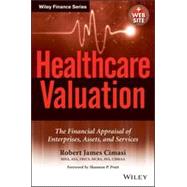In light of the dynamic nature of the healthcare industry sector, the analysis supporting business valuation engagements for healthcare enterprises, assets, and services must address the expected economic conditions and events resulting from the four pillars of the healthcare industry: Reimbursement, Regulation, Competition, and Technology. Healthcare Valuation presents specific attributes of each of these enterprises, assets, and services and how research needs and valuation processes differentiate depending on the subject of the appraisal, the environment the property interest exists, and the nature of the practices.
- Includes theory, methodology, and professional standards as well as requisite research, analytical, and reporting functions in delivering healthcare valuation services
- Provides useful process tools such as worksheets and checklists, relevant case studies, plus a website that will include comprehensive glossaries and topical bibliographies
Read Healthcare Valuation for a comprehensive treatise of valuation issues in the healthcare field including trends of compensation and reimbursement, technology and intellectual property, and newly emerging healthcare entities.








